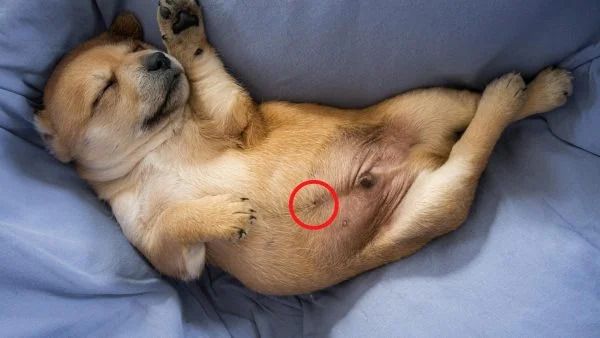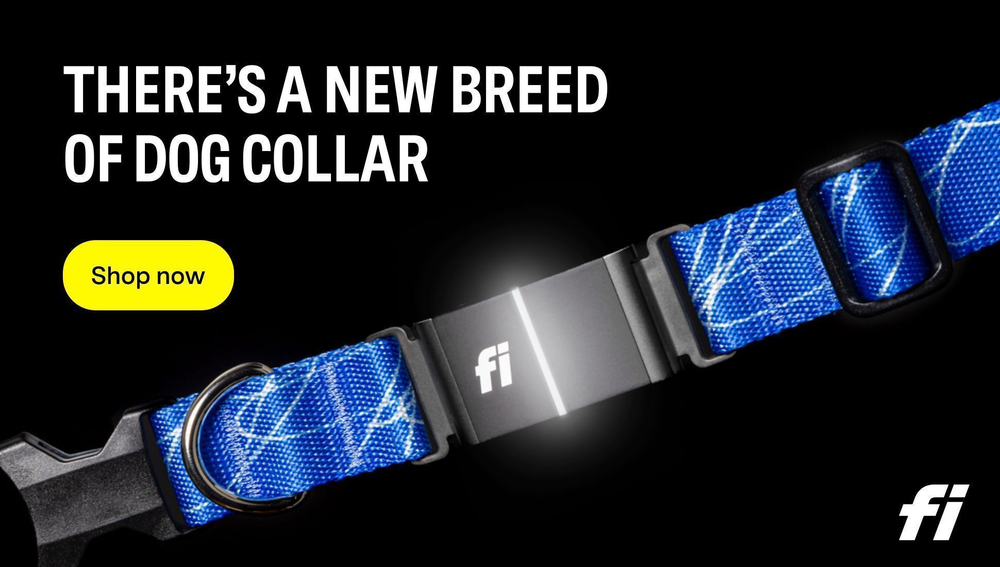In the world of animal anatomy, dogs are undoubtedly one of the most fascinating creatures. From their wagging tails to their floppy ears, every aspect of their physicality piques our curiosity. One common question that often arises is whether or not dogs have belly buttons. After all, we know that humans have them, but do our furry companions share this feature? In this article, we'll dive deep into this intriguing query and explore the world of canine physiology.

Unraveling the Mystery: Do Dogs Have Belly Buttons?
In the world of animal anatomy, dogs are undoubtedly one of the most fascinating creatures. From their wagging tails to their floppy ears, every aspect of their physicality piques our curiosity. One common question that often arises is whether or not dogs have belly buttons. After all, we know that humans have them, but do our furry companions share this feature? In this article, we'll dive deep into this intriguing query and explore the world of canine physiology.
Discover more captivating insights into pet anatomy and care by visiting the Off Leash blog at TryFi.com. Don't miss out on the innovative Fi Dog Collar, equipped with GPS tracking and geofencing features through the Fi app, ensuring your canine companion's safety and well-being. Try the Fi Dog Collar today and embark on a journey of discovery with your furry friend!
Understanding Belly Buttons in Humans
Before we delve into the canine development process, it's essential to grasp the concept of belly buttons in humans. The belly button, scientifically known as the navel or umbilicus, is a small, often scar-like indentation located on the abdomen. It is a remnant of the umbilical cord that connects a developing fetus to its mother's womb during pregnancy. This cord serves as the lifeline for the fetus, supplying it with essential nutrients and oxygen required for growth and development.
After birth, the umbilical cord is cut, and the small section that remains attached to the baby's abdomen eventually dries up and falls off, leaving behind the belly button. This scar is a reminder of the physical connection between a mother and her child during the early stages of life. While the belly button itself has no physiological function in humans after birth, it remains a unique and often sentimental part of our anatomy.

The Canine Development Process
To understand whether dogs have belly buttons, it's crucial to examine the developmental process of canines. Unlike humans, the fetal development of dogs follows a distinct path.
Puppies in a dog's womb receive nutrients through a sac. This sac is absorbed by the developing puppies, allowing them to grow and develop. When puppies are born, they are enclosed within individual fluid-filled sacs. The mother dog plays a crucial role in the birthing process by breaking open these sacs, cleaning the puppies with her tongue, and chewing off the umbilical cords.
Similar to humans, dogs also have a scar that remains after the stump of the umbilical cord falls off. This scar is what we refer to as a dog's belly button.
Belly Buttons in Dogs
In contrast to humans, dogs do not have the same type of belly buttons.
Dogs do have umbilical cords during their fetal development, but the way these cords function and their eventual fate differ from that of humans. In dogs, the umbilical cord connects the developing puppy to the placenta within the mother's womb. Through this cord, the puppy receives nutrients and oxygen necessary for growth and development.
However, unlike in humans where the umbilical cord is typically cut after birth, in dogs, the mother usually plays a role in tearing open the sac containing the puppy and chewing off the umbilical cord, leaving behind a small remnant that eventually dries up and falls away within a few days. As a result, dogs do not retain visible umbilical cords or traditional belly buttons like humans do. Instead, they have a scar-like area where the umbilical cord was attached, which is often referred to as their "belly button," even though it's not a true belly button in the human sense.
So, when you look at your canine companion, you may not find a visible belly button on their abdominal area. While some dogs may have small scars or indentations that could be mistaken for belly buttons, these are not true navel structures and do not serve the same purpose as human belly buttons.
The Navel-Like Structures
Finding a dog's version of the belly button can be a bit of a challenge, primarily due to two reasons. First, dogs typically have fur covering their abdominal area, which can obscure the belly button from plain view. In some cases, you might need to carefully part the fur or use your fingers to explore. Second, a dog's belly button is not as prominent as a human's. It doesn't stick out or create a noticeable indentation, as it does in people. This is because a puppy's umbilical cord is much thinner than that of a human baby, resulting in a less conspicuous scar or nothing visible at all.
To locate your dog's belly button, focus on the midsection of their abdomen, just beneath the rib cage. Look for a small vertical scar or a subtle crease in the skin. Alternatively, you might notice a swirl of fur covering this area.
If you can't see anything, try gently pressing with your fingers; you should be able to feel a slightly firmer spot where the scar tissue is situated. If your dog seems sensitive or uncomfortable when you touch their stomach, consider incorporating handling exercises to help them become more at ease with examinations. However, if they appear to be in pain or distress, it's essential to contact your veterinarian for guidance.

The Fascinating World of Dog Anatomy
Dogs, our loyal and beloved companions, have captivated our interest for centuries. Beyond their charming personalities and heartwarming companionship, dogs possess a remarkable world of anatomy that sets them apart from other creatures. Here, we'll delve into some of the intriguing aspects of dog anatomy that make these animals truly extraordinary.
- Sensory Perception: Dogs possess a heightened sensory perception that allows them to excel in various roles, from hunting to search and rescue. Their sense of smell is particularly remarkable, with some breeds capable of detecting scents at incredibly low concentrations. Additionally, their acute hearing and keen eyesight contribute to their exceptional sensory abilities.
- Diverse Breeds: The diversity in dog breeds is a testament to human influence on their evolution. Over centuries of selective breeding, dogs have developed into an astonishing array of shapes, sizes, and temperaments. From the tiny Chihuahua to the majestic Great Dane, each breed showcases unique anatomical features and characteristics.
- Musculoskeletal System: Dogs are known for their agility and strength, thanks to a well-developed musculoskeletal system. Their powerful leg muscles enable them to run, jump, and play with grace and speed. Additionally, their flexible spines and joints contribute to their agility and ability to adapt to various terrains.
- Dental Structure: A dog's dental structure is designed for its carnivorous nature. Their sharp canine teeth are ideal for tearing and gripping prey, while their molars are used for grinding and crushing bones. Maintaining healthy teeth is essential for their overall well-being, as dental issues can lead to various health problems.
- Digestive System: Dogs have a relatively short digestive tract compared to some other mammals, which is adapted for processing a diet rich in meat. Their stomachs are designed to handle raw meat efficiently. However, it's important to note that modern domesticated dogs can tolerate a wider range of diets, including commercial dog food.
- Reproductive System: Understanding the reproductive anatomy of dogs is essential for responsible breeding and pet care. Female dogs have a unique reproductive cycle called estrus, commonly known as being "in heat." Male dogs have distinctive genitalia, including the presence of testes, which are important for breeding.
- Unique Senses: Dogs have an exceptional ability to communicate and perceive their environment. They use body language, vocalizations, and their sense of smell to interact with both humans and other animals. Their ability to detect pheromones and subtle changes in scent is essential for social communication.
- Heart and Circulatory System: Just like humans, dogs have a circulatory system that pumps blood throughout their bodies, delivering oxygen and nutrients to their cells. Understanding their heart rate and blood pressure is crucial for assessing their overall health.
- Respiratory System: Dogs have a respiratory system designed for efficient oxygen exchange. Their lungs and respiratory muscles allow them to breathe at varying rates, depending on their activity level. Understanding their respiratory rate is vital for monitoring their health.
In summary, the world of dog anatomy is a captivating one, filled with remarkable adaptations and features that have evolved over millennia. Whether you're a dog owner, enthusiast, or simply curious about these wonderful creatures, exploring their anatomy adds depth to our appreciation of the loyal companions that share our lives.

Facts about Whether Dogs Have Belly Buttons
- Navel-Like Marks: While dogs lack true belly buttons, some may have small scars or indentations on their abdominal skin that resemble navel-like structures. .
- Varied Appearance: The appearance of these navel-like marks can vary from one dog to another and may depend on factors such as genetics, age, and any previous surgical procedures they may have undergone.
- A Fascinating World of Anatomy: Understanding the absence of belly buttons in dogs is just one aspect of the fascinating world of canine anatomy. Dogs possess a range of unique anatomical features, from their exceptional sensory perception to their muscular agility, which makes them truly remarkable creatures.
- Important for Pet Care: Recognizing the differences in dog anatomy is crucial for responsible pet ownership and care. It helps pet owners provide the best possible care and ensures the well-being of their canine companions.
In summary, while dogs do not have belly buttons as humans do, their distinctive anatomy and development process contribute to their uniqueness in the animal kingdom. These facts about canine anatomy can deepen our appreciation for these loyal and diverse animals that share our lives.

Conclusion
In exploring the question of whether dogs have belly buttons and delving into the fascinating world of dog anatomy, we've uncovered some intriguing insights into our beloved canine companions. While dogs do not have belly buttons like humans, their unique anatomy and development process set them apart in the animal kingdom.
Understanding these distinctions in anatomy adds to the fascination of dogs and reinforces the uniqueness of these loyal and diverse animals. From their exceptional sensory perception to their muscular agility, dogs are truly remarkable creatures that have enriched our lives in countless ways.
As responsible happy dog owners and enthusiasts, appreciating the intricacies of dog anatomy helps us provide better care for our furry friends. It deepens our connection with these faithful companions and reminds us of the wonders of the natural world that we share with them. So, the next time you interact with your canine companion, you can marvel at the intricate and fascinating world of dog anatomy that makes them the extraordinary creatures they are.
FAQs (Frequently Asked Questions)
1. Can you see a dog's belly button?
Your dog's belly button is essentially a scar and does not have any functional role. However, it does serve as a subtle reminder of your dog's shared heritage with you as a fellow placental mammal.
2. Do other animals have belly buttons?
Yes, many mammals have belly buttons, just like humans. It's a result of the umbilical cord attachment during fetal development.
3. Can I touch my dog's belly where the "belly button" would be?
Yes, it's perfectly fine to touch your dog's abdominal area gently. Just be aware that some dogs may be sensitive in that area, so always be gentle and observant of their reactions.
4. Do dog breed variations affect the presence of a belly button?
No, the presence or absence of a belly button in dogs is not influenced by their breed. It's a universal feature of canine anatomy.
In conclusion, dogs do not have belly buttons like humans do. Their unique fetal development process sets them apart in terms of anatomy, making them all the more intriguing and distinctive. So, the next time you give your furry friend a belly rub, remember that while they may not have a visible navel, their uniqueness lies in many other charming aspects of their physiology.






